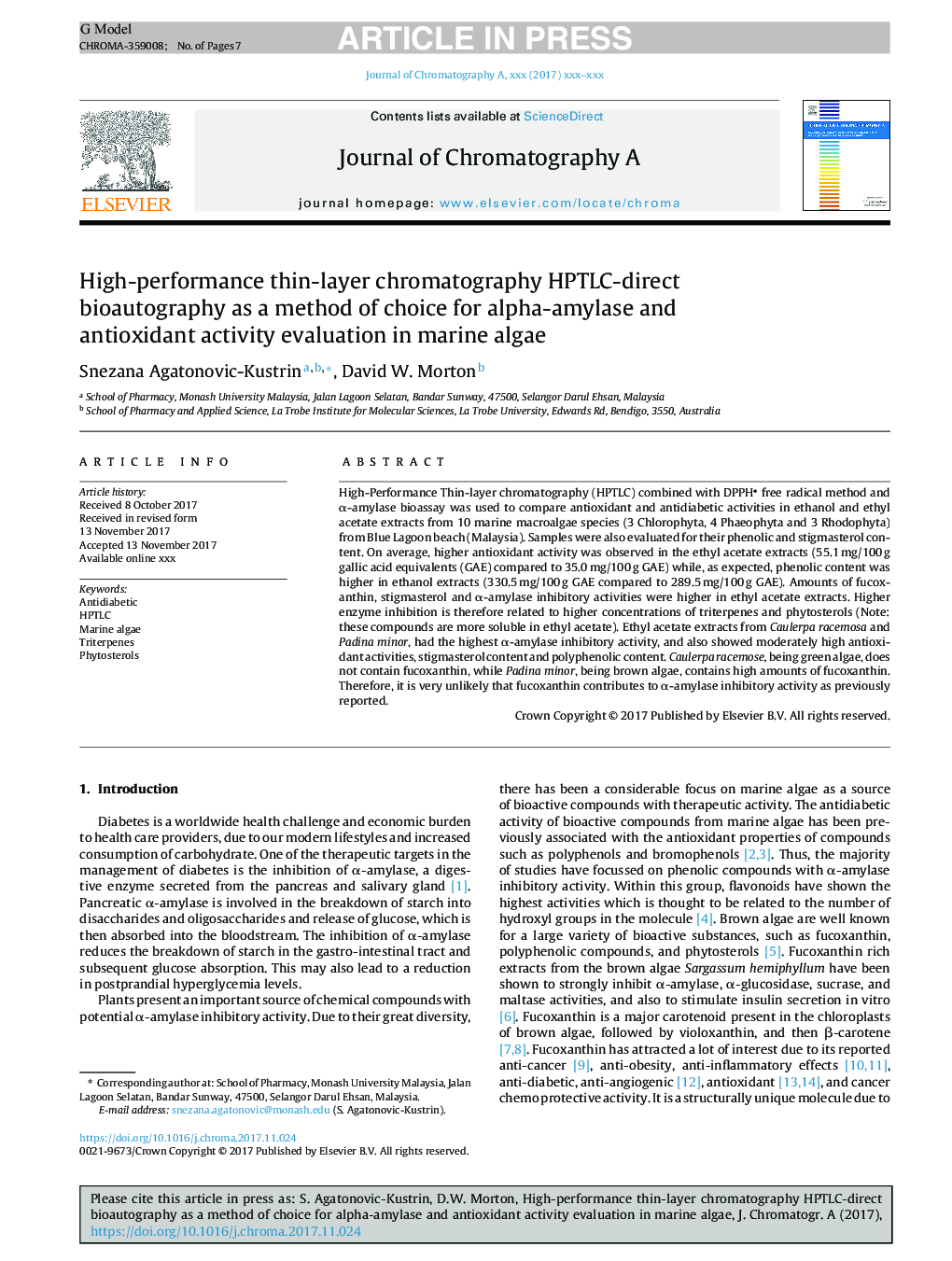| Article ID | Journal | Published Year | Pages | File Type |
|---|---|---|---|---|
| 7609370 | Journal of Chromatography A | 2017 | 7 Pages |
Abstract
High-Performance Thin-layer chromatography (HPTLC) combined with DPPH free radical method and α-amylase bioassay was used to compare antioxidant and antidiabetic activities in ethanol and ethyl acetate extracts from 10 marine macroalgae species (3 Chlorophyta, 4 Phaeophyta and 3 Rhodophyta) from Blue Lagoon beach (Malaysia). Samples were also evaluated for their phenolic and stigmasterol content. On average, higher antioxidant activity was observed in the ethyl acetate extracts (55.1 mg/100 g gallic acid equivalents (GAE) compared to 35.0 mg/100 g GAE) while, as expected, phenolic content was higher in ethanol extracts (330.5 mg/100 g GAE compared to 289.5 mg/100 g GAE). Amounts of fucoxanthin, stigmasterol and α-amylase inhibitory activities were higher in ethyl acetate extracts. Higher enzyme inhibition is therefore related to higher concentrations of triterpenes and phytosterols (Note: these compounds are more soluble in ethyl acetate). Ethyl acetate extracts from Caulerpa racemosa and Padina minor, had the highest α-amylase inhibitory activity, and also showed moderately high antioxidant activities, stigmasterol content and polyphenolic content. Caulerpa racemose, being green algae, does not contain fucoxanthin, while Padina minor, being brown algae, contains high amounts of fucoxanthin. Therefore, it is very unlikely that fucoxanthin contributes to α-amylase inhibitory activity as previously reported.
Related Topics
Physical Sciences and Engineering
Chemistry
Analytical Chemistry
Authors
Snezana Agatonovic-Kustrin, David W. Morton,
